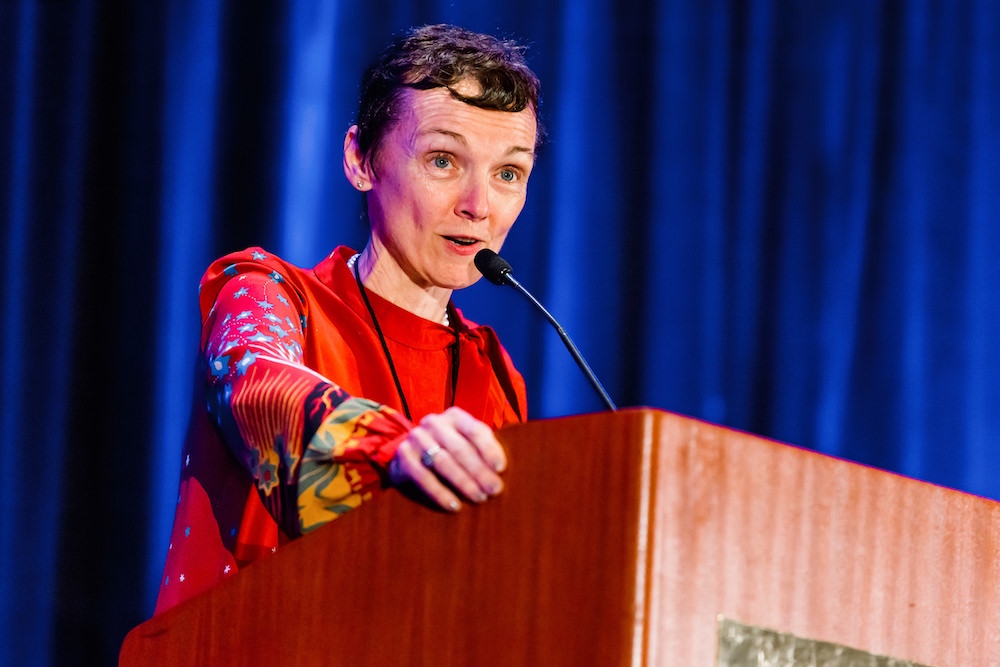Experts Focus on Drug Safety, Continuous Glucose Monitoring, and Access at 2018 ADA Forum
By Jimmy McDermott
 By Jimmy McDermott
By Jimmy McDermott
The diaTribe Foundation and TCOYD hosted a panel discussion at the ADA 78th Scientific Sessions in Orlando, Florida; read about insights on how to improve diabetes care
The 12th annual Diabetes Forum, hosted by The diaTribe Foundation and TCOYD, brought together over 300 doctors, researchers, manufacturing leaders, and patient advocates for open discussion on improving care. We heard about drug safety, the use of continuous glucose monitoring (CGM) in type 2 diabetes, and access. The panel included:

- Dr. James R. Gavin III – Healing Our Village
- Dr. Mikhail Kosiborod – University of Missouri, Kansas City
- Dr. Jeremy Pettus – UCSD, TCOYD
- Dr. Carol Wysham – University of Washington
- Moderators Dr. Steve Edelman (UCSD, TCOYD) and Adam Brown (The diaTribe Foundation and Close Concerns)
 The panel discussion was wide-ranging, starting with the potential for SGLT-2 inhibitor (Jardiance, Farxiga, etc.) use in type 1 – a topic that many closely followed at ADA because of the slightly increased risk for diabetic ketoacidosis (DKA). Panelists agreed that SGLT-2 inhibitors are effective for type 1 diabetes – especially for improving time-in-range – and Drs. Wysham and Edelman added that the risks of DKA can be greatly reduced with proper education.
The panel discussion was wide-ranging, starting with the potential for SGLT-2 inhibitor (Jardiance, Farxiga, etc.) use in type 1 – a topic that many closely followed at ADA because of the slightly increased risk for diabetic ketoacidosis (DKA). Panelists agreed that SGLT-2 inhibitors are effective for type 1 diabetes – especially for improving time-in-range – and Drs. Wysham and Edelman added that the risks of DKA can be greatly reduced with proper education.
Panelists also highlighted the tremendous value of CGM in people with type 2 diabetes. Notably, Dr. Wysham requires all of her new patients to wear CGM before their first appointment; she loves the data and productive conversations it generates! We'd love for you to share this with your healthcare team as an idea and let us know what happens. The diaTribe Foundation believes that CGM must become more accessible and affordable before it becomes “standard of care.” That said, these leading scientists, healthcare providers, and leaders were extremely positive about the recent improvements.
 Another hot discussion centered around cardiovascular outcomes trials (CVOTs; multi-year studies that look at heart health outcomes like heart attacks and stroke): should they still be required for new type 2 diabetes drugs? (EMPA-REG, CANVAS, DEVOTE, and LEADER are examples that diaTribe has previously covered.) Dr. Kosiborod and Dr. Gavin both agreed that mandating CVOTs is still valuable, as they give providers more confidence in long-term outcomes, provide evidence for risk-benefit in individual patients, and allowing for informed decision-making. Dr. Wysham disagreed, however, arguing that CVOTs should not be required if a drug is shown to be effective beyond standard of care therapies.
Another hot discussion centered around cardiovascular outcomes trials (CVOTs; multi-year studies that look at heart health outcomes like heart attacks and stroke): should they still be required for new type 2 diabetes drugs? (EMPA-REG, CANVAS, DEVOTE, and LEADER are examples that diaTribe has previously covered.) Dr. Kosiborod and Dr. Gavin both agreed that mandating CVOTs is still valuable, as they give providers more confidence in long-term outcomes, provide evidence for risk-benefit in individual patients, and allowing for informed decision-making. Dr. Wysham disagreed, however, arguing that CVOTs should not be required if a drug is shown to be effective beyond standard of care therapies.
Quotable Quotes
Expanding Access to CGM:
 “The elephant in the room is still access. You can have the best technology and drugs, but how do we get them to the people who need them the most?” – Dr. Jim Gavin (Healing Our Village)
“The elephant in the room is still access. You can have the best technology and drugs, but how do we get them to the people who need them the most?” – Dr. Jim Gavin (Healing Our Village)
“I do use Abbott’s FreeStyle Libre Pro on all of my patients before their first visit. Patients can’t make an appointment with me until they see a diabetes educator, who puts them on professional CGM. When I see them, we’re ready to talk. [CGM] is a standard of care. The coverage is much better [for CGM in type 2 diabetes]. Libre is actually affordable even if it’s not covered. If people want it, we will work to get it to them.” – Dr. Carol Wysham (University of Washington)
“I have seen many patients really turn around with a CGM. It will hopefully become more accessible and affordable and practical to get.” – Dr. Steve Edelman (UCSD, TCOYD)
 On newer CGMs like Abbott’s FreeStyle Libre and the Dexcom G6: “[With no fingersticks], a huge change is happening right now that can lower barriers to using CGM. People have asked me recently, “How accurate is Dexcom’s G6? I have no clue. [Laughter] I don’t fingerstick and I don’t want to. I am happy that people diagnosed today are in a world where fingersticks can be far less important, and they can even go away.”– Dr. Jeremy Pettus (UCSD, TCOYD)
On newer CGMs like Abbott’s FreeStyle Libre and the Dexcom G6: “[With no fingersticks], a huge change is happening right now that can lower barriers to using CGM. People have asked me recently, “How accurate is Dexcom’s G6? I have no clue. [Laughter] I don’t fingerstick and I don’t want to. I am happy that people diagnosed today are in a world where fingersticks can be far less important, and they can even go away.”– Dr. Jeremy Pettus (UCSD, TCOYD)
“The engagement that’s now possible through CGM is so important, as it enables a new narrative about what it really means to control diabetes. It’s less about chasing biochemical metrics and more about looking to see how much time-in-range you have. The flatter that line is, the better they feel.” – Dr. Jim Gavin (Healing Our Village)
 Expanding treatment options:
Expanding treatment options:
On SGLT-2s for type 1: “People are finally getting it – these medications have a role. They improve quality of life and make it easier to manage this disease.” – Dr. Jeremy Pettus (UCSD, TCOYD)
On SGLT-2s for type 1: “Jeremy and I did a focus group of six endocrinologists and six patients with type 1. We separated them after seeing this data, the endocrinologists said, “Oh, but it doesn’t really lower A1C that much.” With the patients, the word A1C didn’t come up once. Three hours more time in range a day is significant to them.” – Dr. Steve Edelman (UCSD, TCOYD)
 On thinking beyond glucose: “We don’t treat type 2 diabetes to make the numbers look better. The goal of treatment is to make people live longer and feel better – hopefully both. To do that you need to prevent complications.” – Dr. Mikhail Kosiborod (University of Missouri, Kansas City)
On thinking beyond glucose: “We don’t treat type 2 diabetes to make the numbers look better. The goal of treatment is to make people live longer and feel better – hopefully both. To do that you need to prevent complications.” – Dr. Mikhail Kosiborod (University of Missouri, Kansas City)
On do-it-yourself automated insulin delivery (Loop, OpenAPS): “Whether you agree with these DIY systems or not, some of these will become kind of mainstream. There will be lots of competition in this space – one way or another – and closed loop systems will make huge difference.” – Dr. Jeremy Pettus (UCSD, TCOOYD)
On type 2 diabetes drugs: “I always tell patients what I think they should be on, then I say we’ll see what your insurance says. All things being equal, I’m a fan of early intervention with drugs shown to have more durability if started early: SGLT-2 inhibitors and GLP-1 agonists.” – Dr. Carol Wysham (University of Washington)







